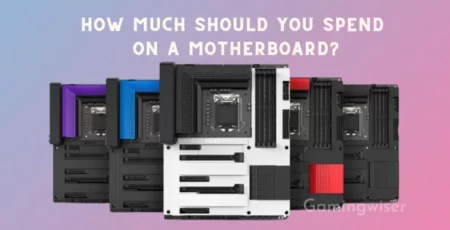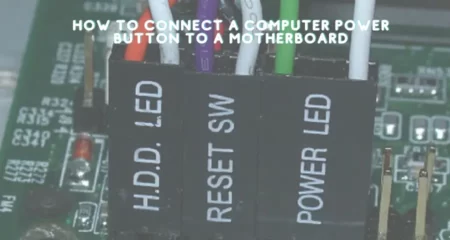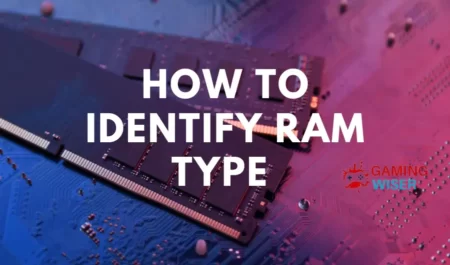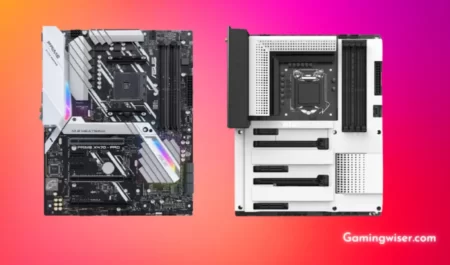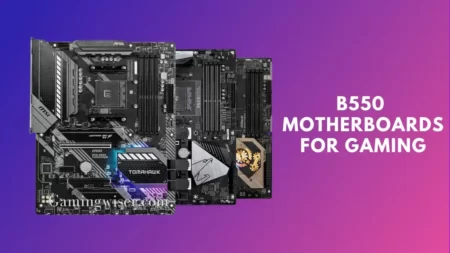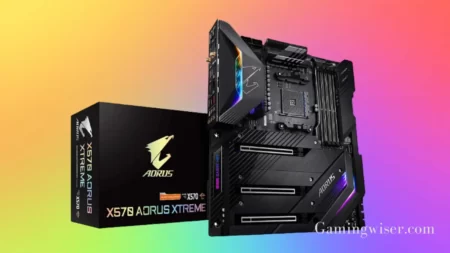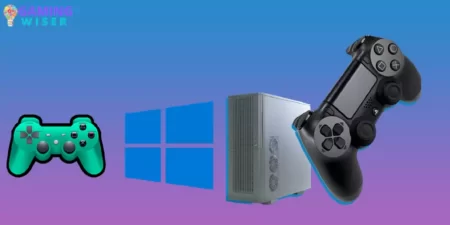Are you wondering if a DDR5 graphics card is compatible with a DDR4 motherboard? Well, the answer is yes and no. It all depends on the specific make and model of each component. So, if you’re looking to upgrade your rig, be sure to do your research first.
However, most DDR4 motherboards should be compatible with a DDR5 graphics card. You’ll want to keep a few things in mind, though.
First, ensure your motherboard has an open PCIe slot the same size as the graphics card you’re buying.
Second, check your motherboard’s manual to see what type of RAM it uses – DDR4 or DDR5. If your motherboard uses DDR4, you’re in luck. If not, you’ll need to buy a new motherboard to be compatible with the DDR5 graphics card.
And finally, ensure your power supply can handle the extra load of a more powerful graphics card.
DDR5 vs DDR4
DDR5 memory is not backward compatible with DDR4 motherboards and vice versa. The two technologies use different signaling protocols and are not physically compatible. If you try to install DDR5 memory in a DDR4 motherboard or vice versa, the system will not boot up.
What is DDR5?
DDR5 is the next generation of memory technology, offering significant performance improvements over DDR4. DDR5 supports data rates of up to 6400 MT/s and delivers up to twice the bandwidth and 40% more energy efficiency than its predecessor.
Compared to DDR4, DDR5 has higher speeds, increased bandwidth, power efficiency, and improved reliability. It also supports new features, such as Error Correction Code (ECC) and Address/Data Dual In-Line Memory Modules (ADIMM).
The new standard is also expected to include in-package DRAM and multi-channel memory support. In-package DRAM is a technology that puts the DRAM die inside the package of the processor rather than on the motherboard.
This allows for more efficient heat dissipation and improved performance. Multi-channel memory support means each channel can be assigned its DIMM slot, improving performance in systems that use more than one DIMM per channel.
Advantages of DDR5
- DDR5 is expected to offer double the bandwidth and density of DDR4, while also reducing power consumption.
- This will make it an attractive option for system builders, who need to pack more performance into smaller form factors.
- It will also be useful for data centers, which are increasingly being asked to handle more data with less power.
- In addition, DDR5 should be more reliable than its predecessor, thanks to increased error correction codes.
- All of this makes DDR5 an important development for the future of computing and data storage.
Disadvantages of DDR5
The disadvantages of DDR5 are that it is very power hungry, costly, and not backward compatible with DDR4.
What is DDR4?
DDR4 is the fourth generation of DDR (Double Data Rate) SDRAM, a type of memory used in computers. DDR4 is faster and more efficient than DDR3 and uses less power. It has a higher bandwidth than DDR3, meaning it can send more data per second. This makes it ideal for high-performance applications such as gaming and video editing.
It improves upon DDR3 in a few ways:
- For one, it higher the maximum bandwidth per pin to 1024Mbps (up from 800Mbps).
- It also consumes 20% less power than DDR3 at 1.2v (versus 1.5v for DDR3).
- Finally, it has a greater storage density, allowing chips up to twice as large as their DDR3 counterparts.
Difference between DDR5 and DDR4
DDR4 and DDR5 are two different types of DRAM memory. DDR4 is the current type of DRAM memory, while DDR5 is the next generation of DRAM memory.
The main difference between DDR4 and DDR5 is that DDR5 has a higher data rate than DDR4. This means that DDR5 can send or receive more data per second than DDR4.
Another difference between DDR4 and DDR5 is that DDR5 uses less power than DDR4. This makes it a better choice for devices that need to conserve power, such as laptops and mobile devices.
In addition, DDR5 will also have double the capacity of DDR4, meaning that it can store twice as much data. Finally, DDR5 will use less power than DDR4, making it more efficient.CompatibilityDDR5 is not compatible with DDR4.
The two technologies use different signaling voltages, sleep modes, sizes, shapes, and speeds.
Conclusion
Our research shows that a DDR5 graphics card is compatible with DDR4 motherboards. However, it is essential to check the compatibility of your specific hardware before making a purchase. Constantly update your motherboard’s firmware and drivers to ensure the best compatibility and performance.
FAQs
-
Is ddr5 graphics card compatible with ddr4 motherboard?
Yes, a DDR5 graphics card is compatible with a DDR4 motherboard. The DDR4 motherboard refers to RAM and is not the same as discrete graphics memory.
A DDR4 motherboard can endure DDR3, DDR5, GDDR5, and GDDR5X graphics cards. However, the performance of the two will not be as good as if they were both DDR5.
-
How do I know if my motherboard supports DDR5 graphics card?
When you are looking to purchase a graphics card, the first thing you need to do is determine if your motherboard supports DDR5. To do this, you will need to check the specifications of your motherboard.
You can usually find this information in the product manual or the manufacturer’s website. If your motherboard does not support DDR5, then you will need to purchase a graphics card that is compatible with your motherboard.
-
Can you use a GDDR5 with DDR4 RAM?
A recent trend in the computer industry is the shift from DDR3 to DDR4 RAM. However, some wonder if they can use a GDDR5 with DDR4 RAM. The answer is yes, and you can use a GDDR5 with DDR4 RAM.
However, you may not get the performance that you expect. One reason is that the two types of RAM have different clock speeds. The clock speed of a GDDR5 is typically higher than the clock speed of DDR4 RAM.
This means that your computer will have to work harder to keep up with both types of RAM demands.
As a result, you may decrease performance when using a GDDR5 with DDR4 RAM. Another thing to consider is that not all motherboards are compatible with both types of RAM.
-
Do you need a special motherboard for DDR5?
DDR5 is the next generation of RAM, offering significant improvements over DDR4. But do you need a particular motherboard to use it? The answer is no – at least, not yet.
Most modern motherboards support DDR4 and DDR5, so you can upgrade to DDR5 without buying a new motherboard. However, that may not be true for much longer.
Intel has already announced plans to stop supporting DDR4 in its processors, so to use DDR5, you’ll likely need a motherboard that explicitly supports it.
So if you’re considering upgrading to DDR5, don’t wait too long – the time may come when you have to buy a new motherboard.
-
Can I use a DDR5 GPU on a DDR4 motherboard?
GPUs are one of the essential pieces of hardware in a computer. They are responsible for rendering the graphics in a game or application. With the release of DDR5 GPUs, many people wonder if they will work with DDR4 motherboards. The answer is yes, and you can use a DDR5 GPU on a DDR4 motherboard.
However, there are some things you need to know before making the switch.
First, make sure your motherboard and GPU both support DDR5 memory. Not all motherboards and GPUs support DDR5 memory.Second, check your BIOS settings. You may need to enable PCIe 4.0 to get the most out of your new GPU. Finally, you may need to update your drivers and software to take advantage of the new features offered by DDR5 GPUs.
-
Is it worth buying DDR4 RAM now or wait for DDR5?
DDR5 promises faster data transfer speeds and lower power consumption, so it’s something to look forward to. However, DDR4 RAM is still a capable memory standard and will likely be around for a few more years.
If you don’t have any urgent need for faster data transfer speeds, then it might be worth waiting for DDR5. But if you need to upgrade your RAM soon, DDR4 is still a good option.
-
Can I put a 16x graphics card in a 4x slot and it still works?
It is possible to put a 16x graphics card in a 4x slot, which will still work. The card may not run as fast as it would if it were in a 16x slot, but it will still function. Some people choose to do this to save money on the graphics card cost.
-
Can I run DDR5 GPU with DDR3 RAM?
DDR5 is the next generation of RAM technology expected to come out in 2020. It is a successor to DDR4, the most common type of RAM. However, there has been some speculation on whether running a DDR5 GPU with DDR3 RAM is possible.
There are two types of RAM: static and dynamic. Static RAM does not need to be refreshed like dynamic RAM, and it can typically hold its state for more extended periods.
This makes it ideal for use in GPUs since they need to maintain their state even when the system is turned off. On the other hand, Dynamic RAM needs to be refreshed every few milliseconds to keep its state. Most CPUs use dynamic RAM, while most GPUs use static RAM.


![Why Motherboard Is Important? [Complete Details]](https://gamingwiser.com/wp-content/uploads/2021/11/Why-Motherboard-Is-Important-450x235.webp)
